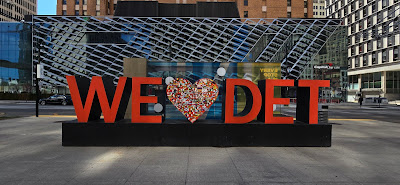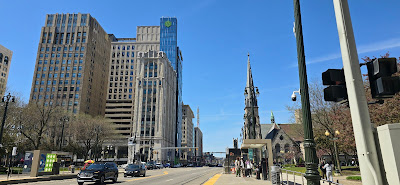

Better known by its name than any of its numbers, Woodward Avenue connects Detroit to Pontiac and is one of the most iconic roads in Detroit and serves as the line between eastern and western halves of the city. The M-1 highway runs along the majority of Woodward Avenue.
Emblematic of the auto industry and Detroit culture, Woodward Avenue boasts many features and many firsts. Originally known as the Pontiac Road, Woodward Avenue was the first surveyed road in Michigan, built in 1819. The first concrete-paved road in the United States was Woodward Avenue between Six Mile and Seven Mile Road, paved in 1909. The three-color traffic light was first installed on Woodward Avenue in 1919. The Woodward Avenue Dream Cruise featuring classic cars is also hosted along the iconic road.
Woodward Avenue, though urban in character, has been designated an All-American Road as a National Scenic Byway, and a Pure Michigan scenic byway. The road is known as the Automotive Heritage Trail.
Woodward Avenue begins at Jefferson Avenue. The southernmost block of Woodward is a pedestrian plaza, the Spirit of Detroit Plaza.


A We Love Detroit sign on the first vehicular block of Woodward, between Larned and Congress Streets.

Along Merchants Row, the segment of Woodward Avenue between Campus Martius and Grand Circus Park.
Woodward Avenue bisects Grand Circus Park.



Woodward Avenue intersects Adams Avenue. At Adams Avenue, M-1 begins northbound and ends southbound.
The State Theatre, better known as the Fillmore Detroit, is located along Woodward next to the Fox Theatre. I attended the Trivium and Bullet For My Valentine concert advertised there!


















No comments:
Post a Comment